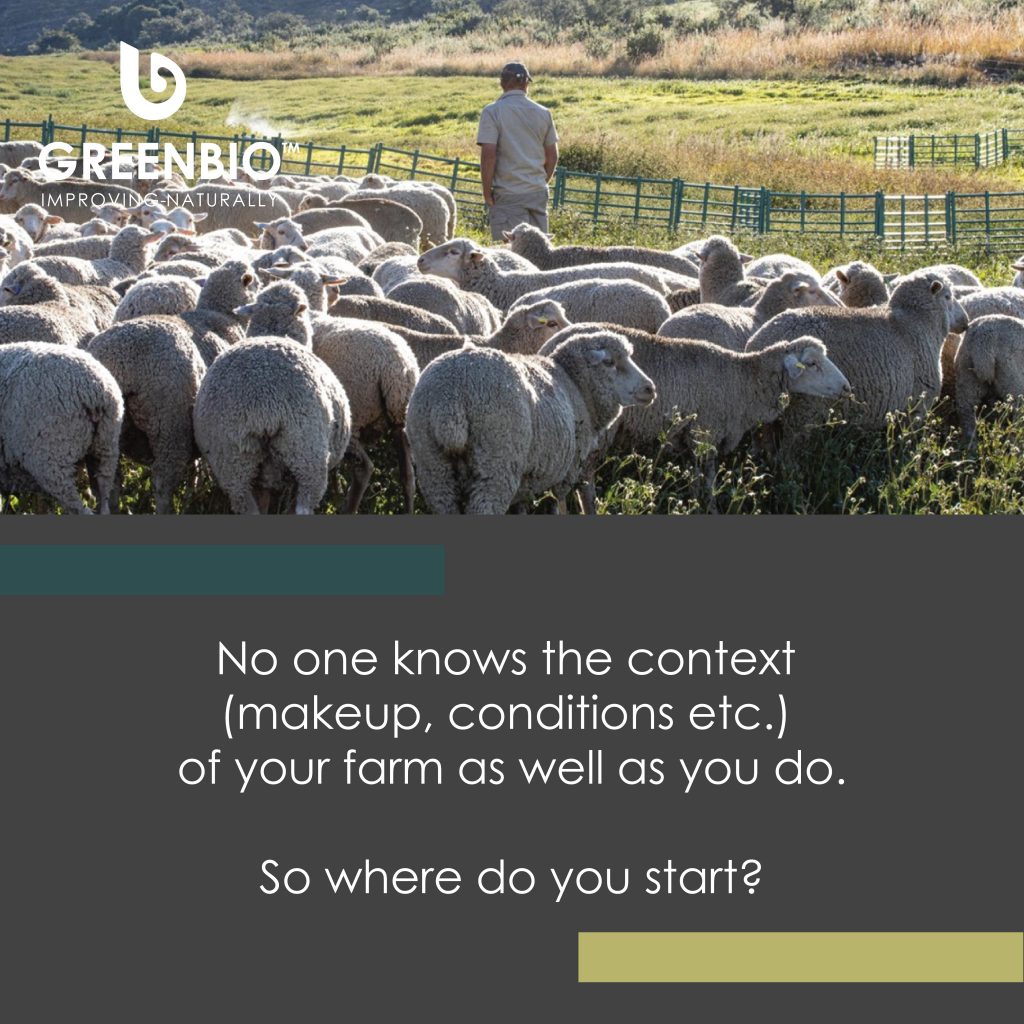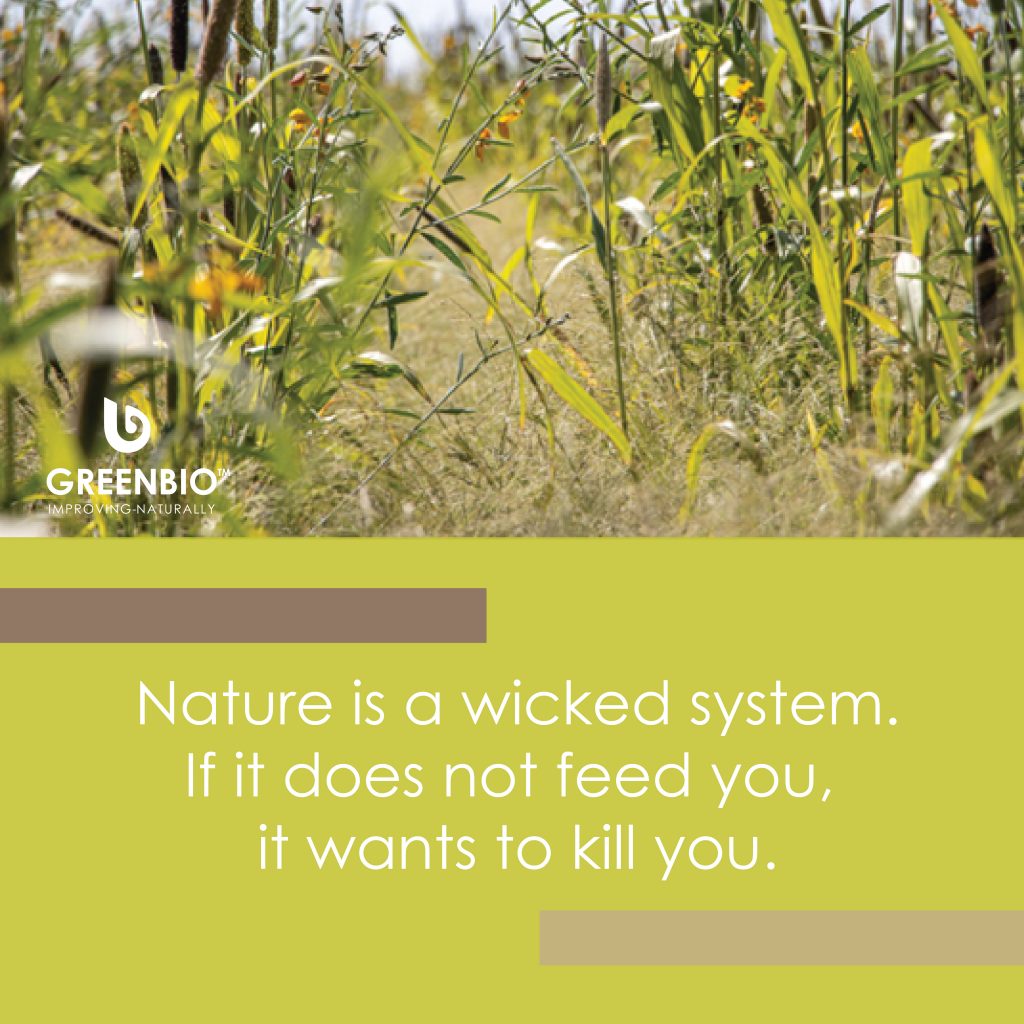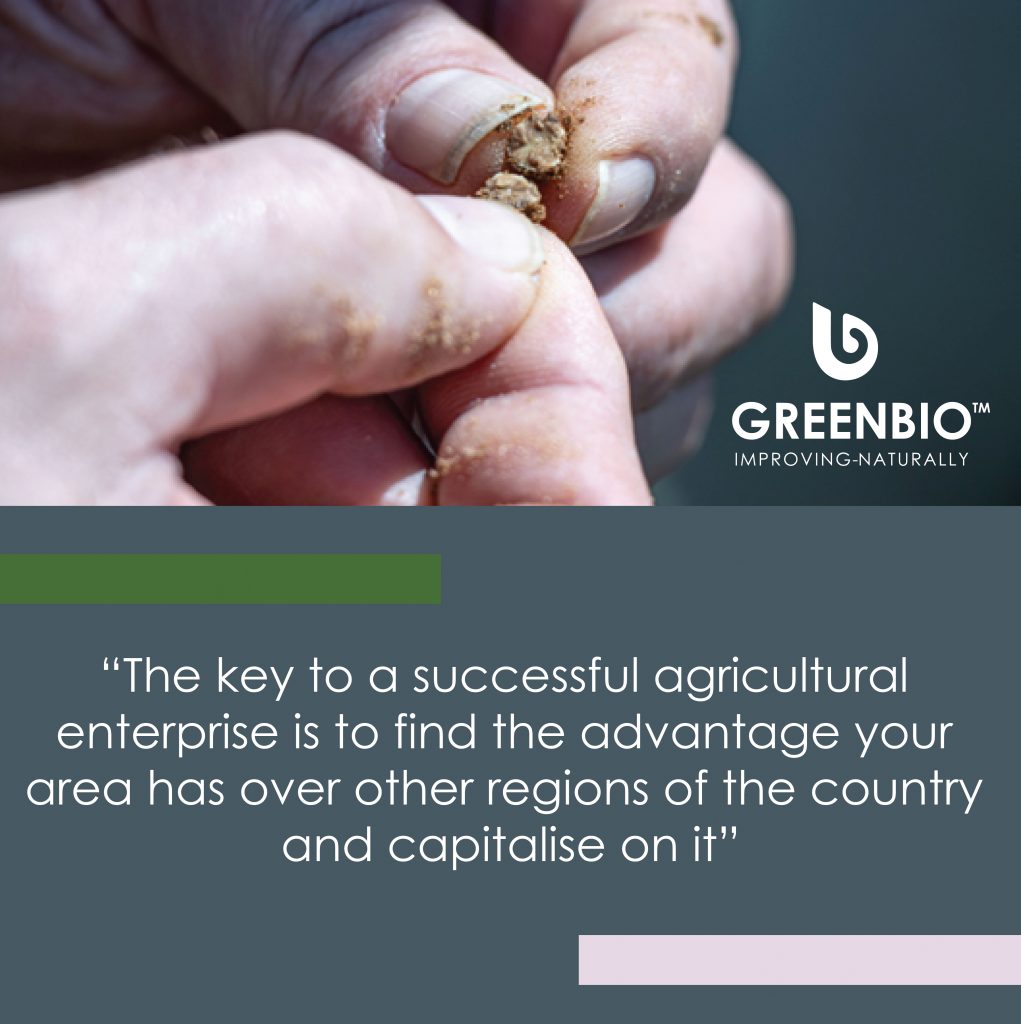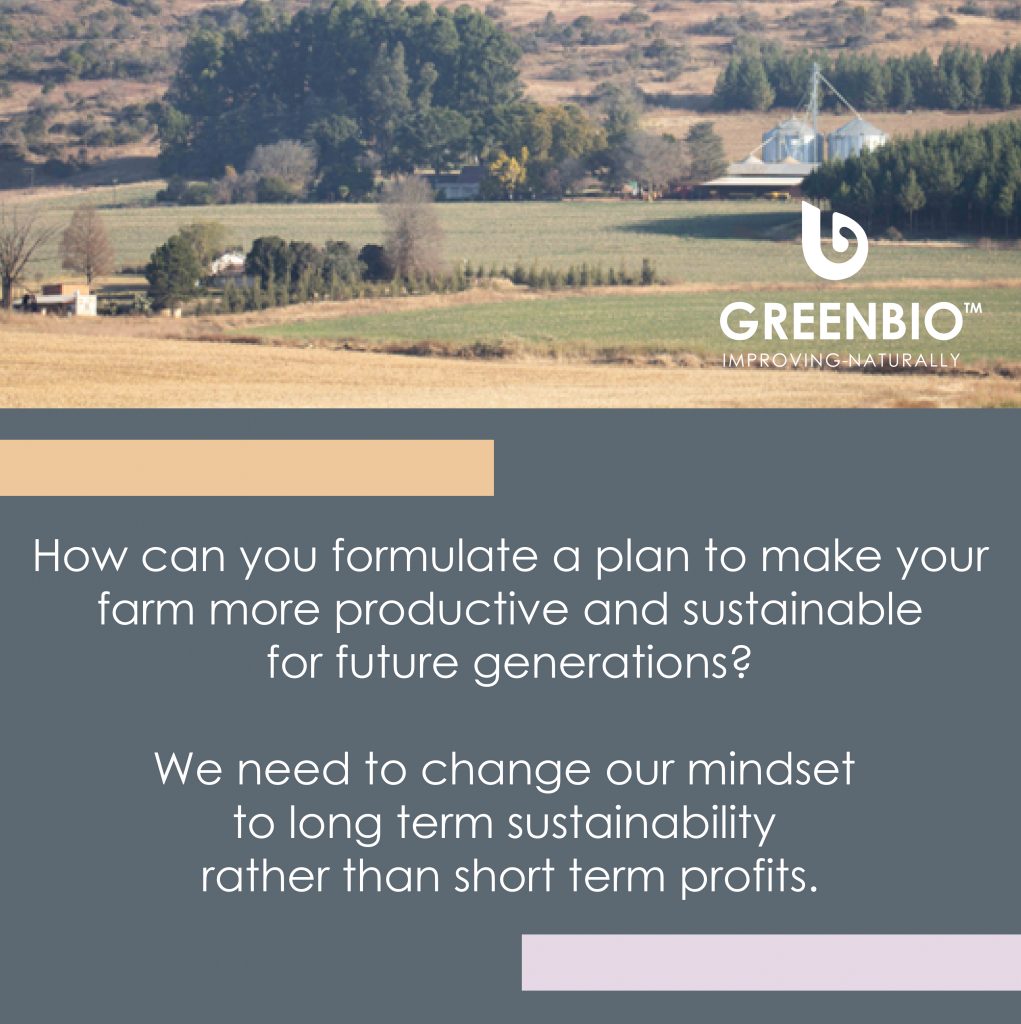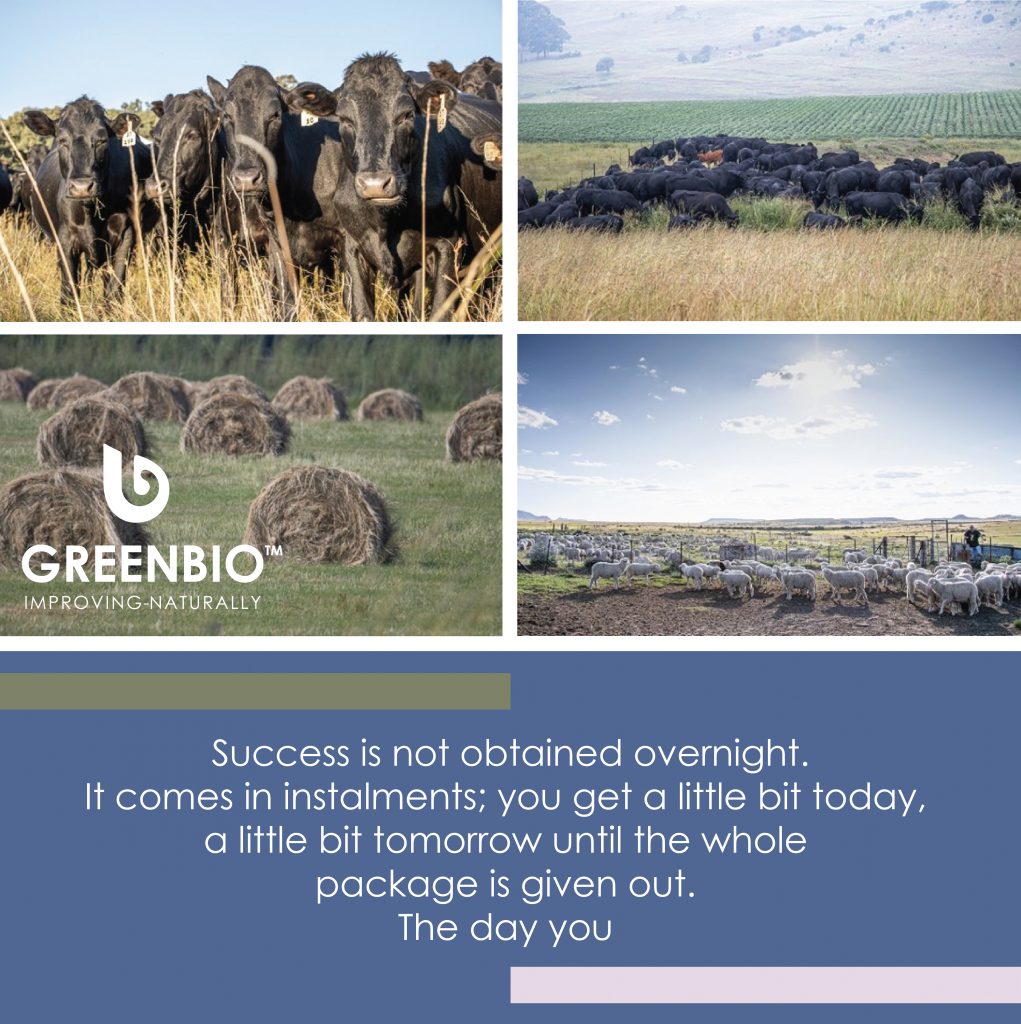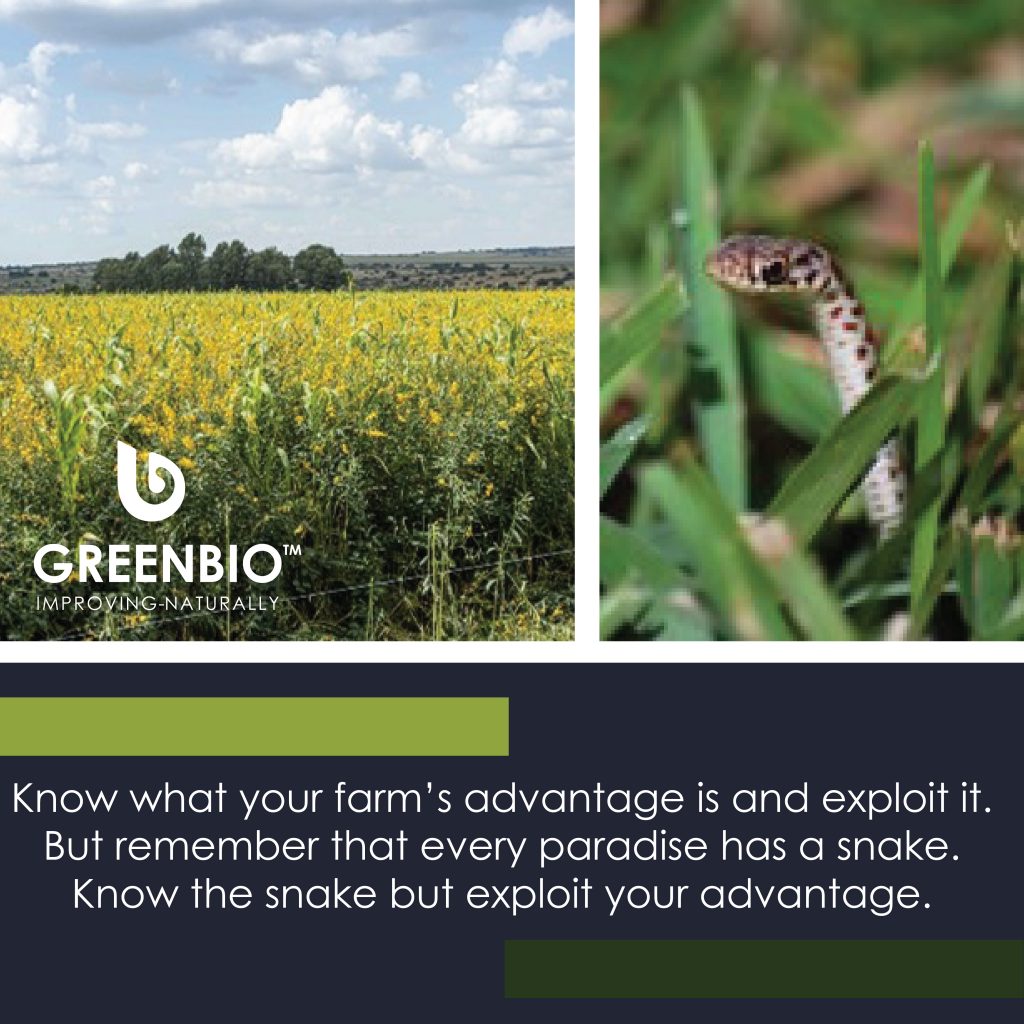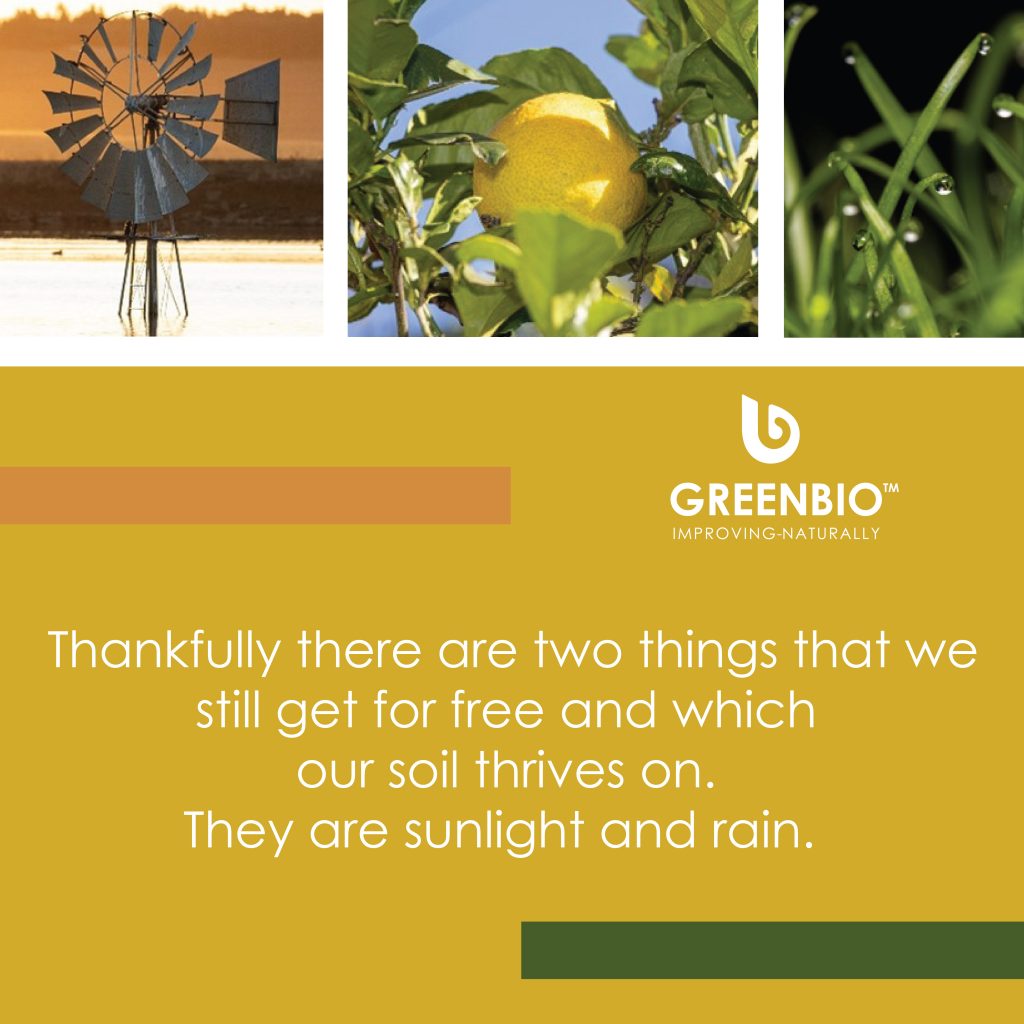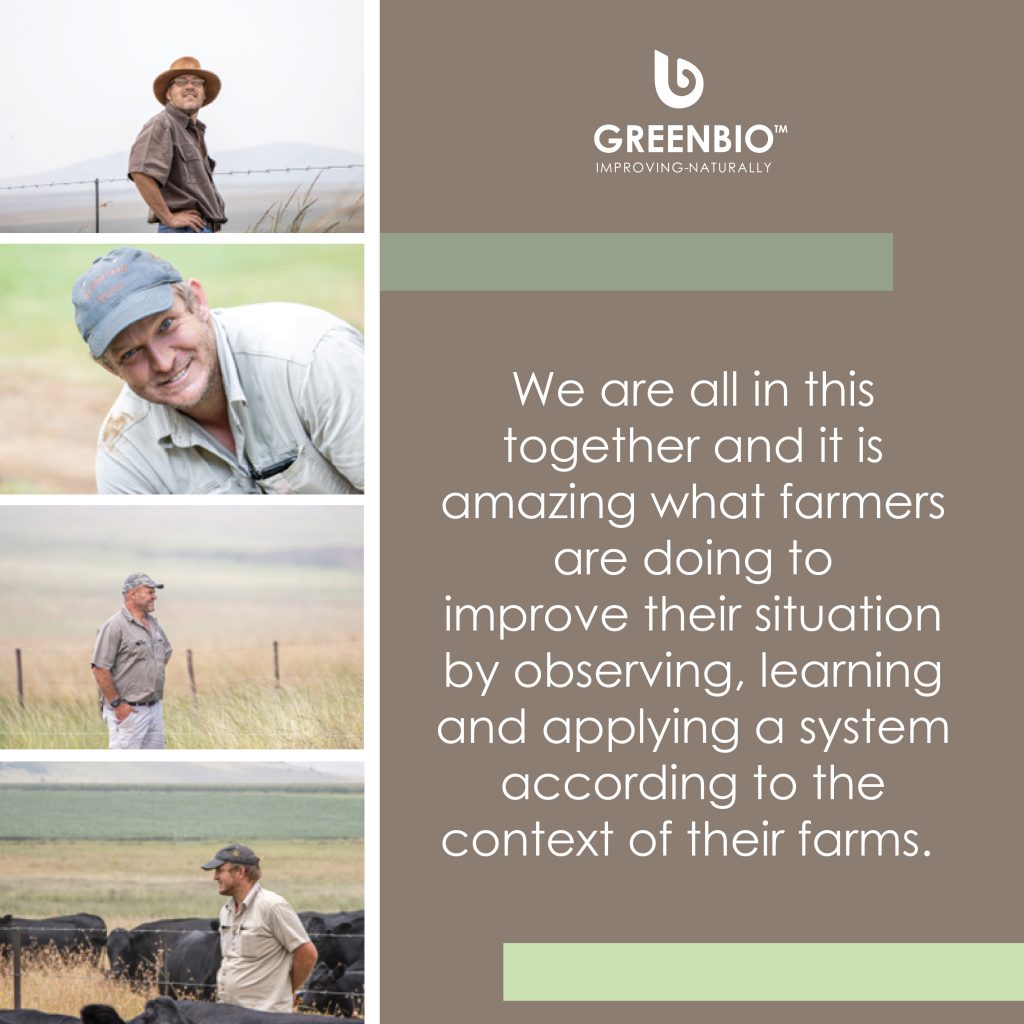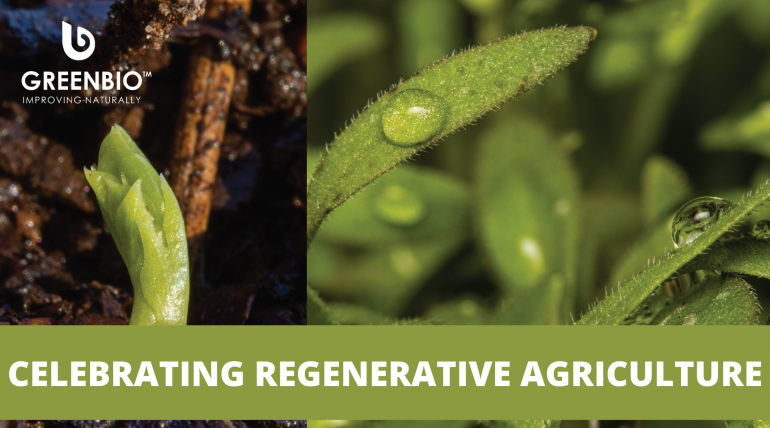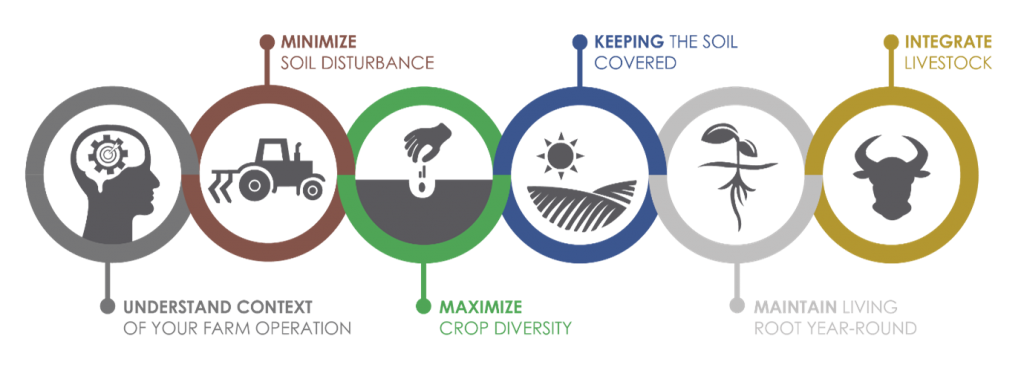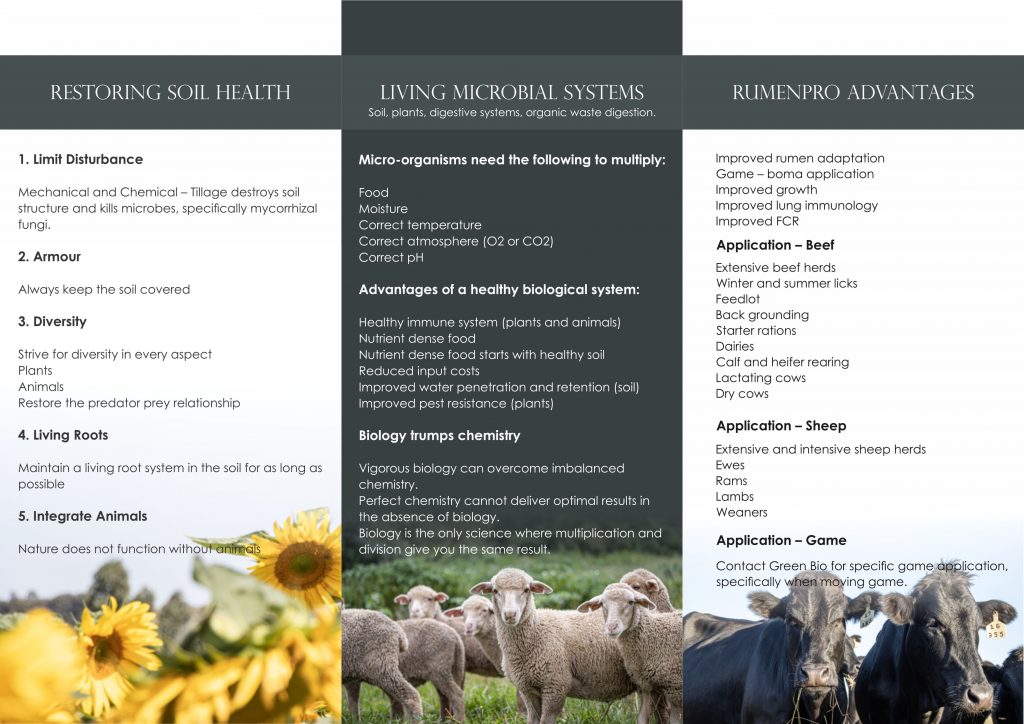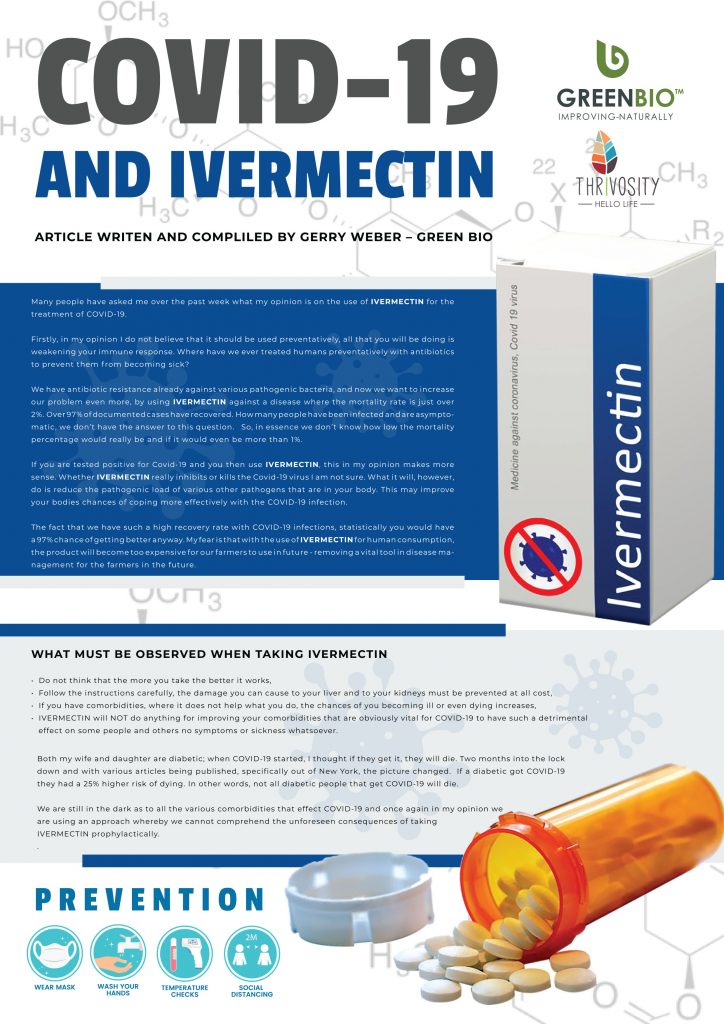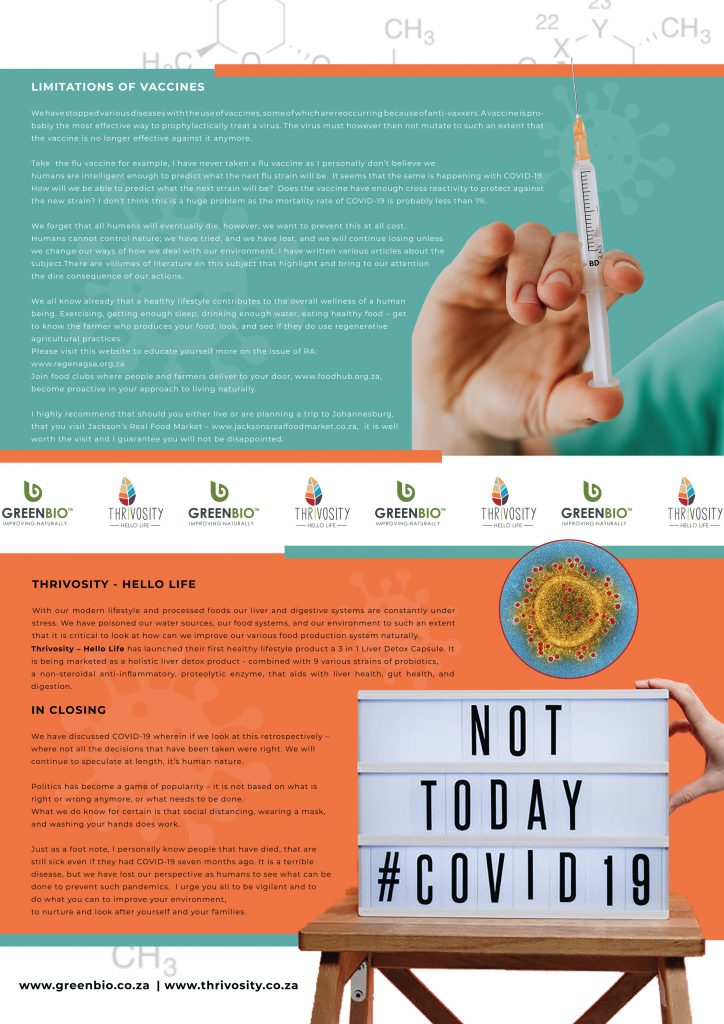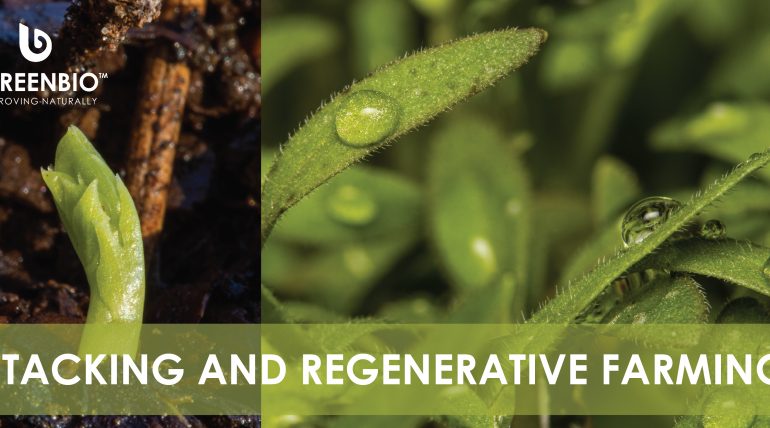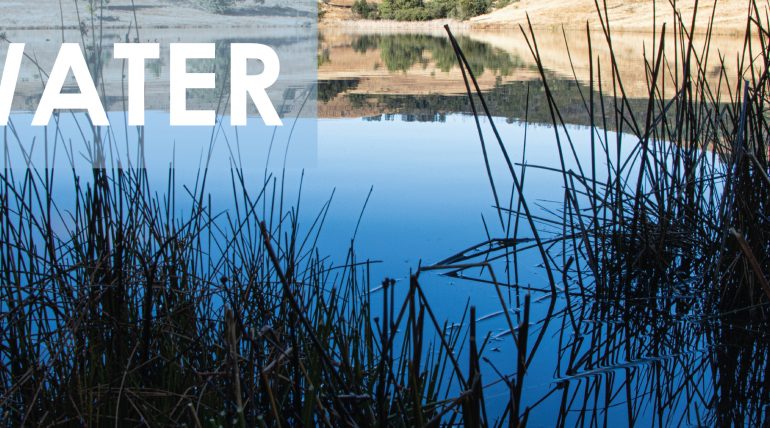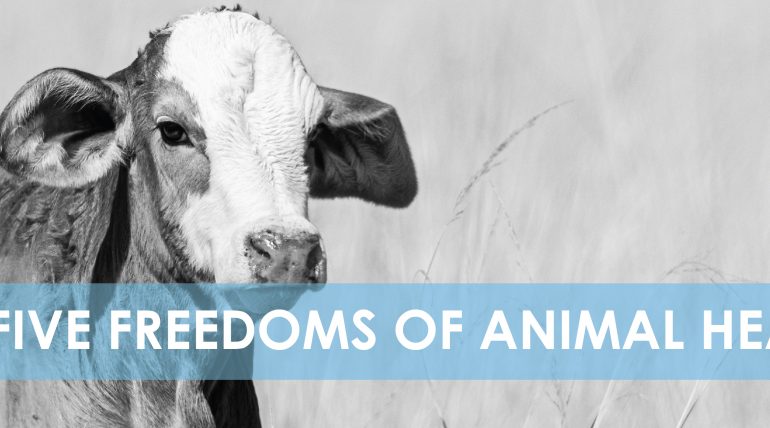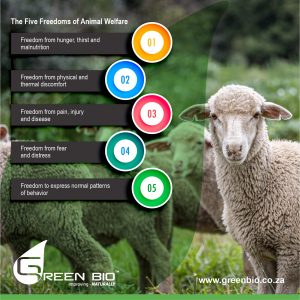Chasing the disease
Salespeople can be very convincing that our production is at risk of various production losses due to threats if we do not use their products. Therefore, we often blanket treat our production herds before a threat has even emerged. This management practice is one of the biggest drivers of increased production cost. The question is, “How do we build resilience into our herd so that we do not have to blanket treat our herds annually or even weekly as is the case in some intensive production systems?”
Is it possible to produce animal protein without the use of antibiotics, antibiotic growth promoters, internal and external parasite control? When will the consumer demand it? When will we realise what unforeseen effects we cause with our chemical controls that we continually use?
Chemicals
Chemicals work, and they are a tool in the management toolbox that is available to the producer to achieve his goal of producing healthy nutrient dense food. However, where the environment is regenerated, the animals become more resilient. This ultimately enhances human health rather than causing harm if managed correctly.
Chemicals are fortunately not the only tool. Chemicals should not be used indiscriminately. We must determine what management practices increase our risk of disease, and really enhance those that promote health. Unfortunately, those that promote health are very seldom a quick fix. It takes time to reverse years of chemical abuse – be this in animal or crop production.
Genetics
You might think I am mad for saying this, because genetic advancements are what keeps us in business. If it were not for our yield, be it piglets/sow/year, or the number of tons per hectare or liters of milk per cow per day, we would not be in business anymore.
Banks do not bank yields.
We cannot run our production systems on a knife’s edge. We must build resilience and robustness into our food production systems. This means that we will have to build up our biological services that nature has provided for centuries already in the following areas:
- Soil biology
- Diversity
- Immune system
Soil
One of the most devastating effects of conventional agriculture, is that we try and control everything with chemistry. Soil has three main attributes namely biological, chemical, and structural. Regrettably, until recently, we have ignored the biological attributes of soil, probably because we did not understand it. It is not like chemistry, where the elements that were present before the reaction, are still there after the reaction, in whatever form these may be present.
Biology is the only science where multiplication and division give you the same result. We cannot and will probably never be able to simulate every pathway and biological interaction within soil, the rumen, the small intestine or even between the various predator prey relationships or copy the immune system reaction to all the beneficial bacteria and pathogens in and around us.
By the time research is published it is already outdated. Research is about pushing the knowledge frontier. You can never be on “the other” side of the knowledge frontier, only on the known side of the frontier. So, when research is published, it is already outdated since the frontier was moved, you are now “this side” of the frontier, and new opportunities have emerged as a result of the increase in knowledge. These are not always good or benign opportunities.

The complexity of nature
We cannot comprehend the complexity of nature, and the biological services nature provides. Instead of trying to improve nature with a reductive mindset, we should rather enhance it with biological principles that have been shown, even if only anecdotally, to be true – where farming practices have reduced the input costs on cash crops and even animal production units. Just because we cannot prove something, or the instrumentation is not accurate enough to give us a result, this does not nullify the observations of the farmer, who has the best local knowledge about his area, and his farm.
A simple example is a penetrometer. After a certain hardness is measured, it states that roots will not grow in such hard soil. However, when a profile pit is dug, there are roots deeper than the penetrometer indicated. Why?
How can two neighboring farms have a disease profile that is so different that the one farmer must dip his cattle every 14 days during the peak tick season and the second farmer has not dipped for the last 15 years?
Why are some animals more resistant to internal parasites than others? How can we breed more resilient animals? How can we make sure that the newborn animals get the right profile of antibodies through the mother’s colostrum, from all the pathogens that are present on the farm?
Antibiotics
Antibiotics, anthelminthic, tick remedies and other chemicals are part of the management toolbox any farmer should be able to use. The problem is that it is used indiscriminately or as the only tool. The principle of “the bigger the doubt, the bigger the hammer” is then applied. This is not sustainable, and only increases your input costs.
Everything in nature is about survival and this is also true for the pathogens. Through the indiscriminate use of antibiotic growth promoters, and the incorrect use of antibiotics when a disease does breakout, we have created resistant pathogens in all aspects of animal production.
The problem is also experienced in human health where many doctors still prescribe antibiotics at the slightest aliment. Producing food ethically and with integrity is something to strive for. This should be the role of the consultants; they should provide management solutions. Selling a product for every problem is not a solution. This only turns consultants into salesmen and not somebody that has the farmer’s best interest at heart.
We should view the solution of the production system holistically, and not only at a product level to solve our problems caused by pathogens. This principle does not only apply to animal production, but is also applicable to cash crops, vegetables, and fruit production.
If we only look at a short-term solution, and a cure for the problem now, but do not change anything in our management systems to try and prevent the disease outbreak for the next year, we will have the same disease challenge again and again.
If you always do what you always did, you will always get what you always got. As Albert Einstein once said, “Insanity is doing the same thing over and over and expecting a different result.”
So how do we build a more resilient food system? The short answer is: Enhance your soil biology. If you understand that fact and pull the value chain from the soil through to plant health, animal health and ultimately human health, you will understand how important it is to become a custodian of the land again. Enhancing the soil biology, improving the predator prey relationship, in order to use natural predators instead of killing the food for the predators, and even the predators themselves. That way we will not have to wonder why we have an antibiotic, pesticide or herbicide resistance problem. We must enhance our soil biology, and the biological and immunological systems in our plants, production animals and ourselves.
Immune systems
Allergies, food intolerances, asthma and other disorders like ADD and ADHD, are on the increase. This is the result of how we produce our food, how we raise our children and how we have been raised.
The convenience of ready-made meals, our obsession to keep up with the Joneses and trying to keep everything sterilised, just out of fear that we might catch a disease, has resulted in our immune systems never being triggered – not even by probiotics – to function properly. Our immune system must be primed to withstand pathogens. If we always kill everything, our immune system will not be triggered nor will it develop to withstand the various antigens that is all around us constantly.
Dr. Christine Jones of Australia often talks about enhancing the biological service to such an extent that you get quorum sensing. When this happens, the bacteria (probiotic bacteria, normal flora) can trigger certain gene expressions in the host animal, or plant. This is directly related to the immune system as well. Where the immune system is triggered to perform optimally. If the immune system is primed optimally as an infant, a lot of the food allergies and food intolerances would not be recorded.
There are more and more reports and scientific articles being published where the relationship between soil bacteria, the mental state and a healthy gut system are described as being part of a whole. We have lost our relationship with soil.
When was the last time you walked barefoot on healthy nutrient rich soil? When was the last time you got your hands “dirty” planting or seeding your own vegetables or fruit trees?
We are part of nature, and not above it. The biological systems that enhance our immune system are neglected.
Animal production
How do we produce robust, more resilient production animals, where we can rely on the immune system of the animal to protect themselves and their offspring against various diseases? Can we chase the disease and make our mother animals produce better colostrum for their newborn? The answer is yes.
How often do we hear farmers say that a camp is infected, when animals give birth in the camp and the newborn animals get sick?
One of the most critical defense mechanisms of the newborn animal is the antibodies produced by the mother animal and passed on via the colostrum to the newborn. It is critical that every newborn animal gets its share of colostrum as soon as possible. The shorter the time from birth until the first sip of colostrum, the better protected the newborn animal is. After a certain time frame the small intestine of the newborn “shuts down” and no IgG antibodies can pass through the villi. It is useless to feed colostrum after that time. Six hours after birth is already pushing the boundary of inefficiency.
Commercial colostrum can be used for very specific diseases. For diarrhea and other gut related ailments, it is better to prime the mother animals so that their colostrum is of such a nature, that the various pathogenic antigens are covered by her antibodies produced in her colostrum.
There is a fine balance of controlling the pathogenic load on the farm and keeping the production animals healthy. Disease outbreak, and your management practices are crucial to keep the balance between production and disease. The various production systems also determine what kind of animal management system you should follow. When comparing a TMR system and a pasture dairy system, the pasture system is more robust and resilient to price fluctuation than a TMR system. Any intensive system is more prone to disease.
As far as the proximity of the animals are concerned, it should be determined whether the proximity of the animals causes the disease or whether it is the animal management system that causes the disease. We are working with life systems from the soil, to the gut and what we produce is organic material on which bacteria and other pathogens can thrive. If we sterilize everything every day, we destroy the immunes system’s ability to react to a pathogen. What if the pathogen becomes resistant to the antibiotic or the disinfectant that we try and kill it with daily?
Parasites
How often have farmers’ problems started as soon as they started dipping for ticks? We will not be able to farm without ticks. They are part of the system. The important question is: How can we minimise our losses due to tick-borne diseases? At the beginning of the article I mentioned that neighboring farms, at the peak of the tick season, one farmer dips every 10 – 14 days, whereas the neighbor has not dipped in 15 years. Does the neighbor not have red water? The answer is no, far from it. True, some of his animals do succumb to red water every year, and sure, it is a loss, but it is never more than 10 animals on a herd of 1300 animals.
The production loss of walking the herd to a dip every 10 – 14 days, is probably greater than the 10 animals lost annually. The other advantage of losing the 10 animals is that they did not adapt to the specific disease on the farm. If they did, they would keep the ticks alive and therefore the disease alive.
The same happens with sheep and internal parasites. If you constantly blanket treat you animals for internal parasites, all you are doing is weakening their defense system. Once again, you cannot farm without internal parasites. They will always be part of the system. Doing the FAMCHA test before dosing sheep and only treating those that need to be treated is already a step in the right direction. If an ewe or mother animal must be treated constantly, discarding that animal from you farm is probably the better option, as she will only produce resistant parasites for you.
Mother animal vs baby animal
As far as diarrhea related diseases are concerned, it is often the mother animal that is the host of such diseases or pathogens. She is the carrier of the disease and the baby animal is then infected and the multiplier of the disease. This is part of the life cycle of the pathogen. It will not kill the mother animal, but the young animal. Something will eat the carcass of the young animal and this way the pathogen will find a new host.
It is therefore crucial to breed animals that can withstand the onslaught of the various pathogens on the farm. Priming the mother animal to produce effective colostrum is essential in your overall disease management system.
There are various factors that influence colostrum production. Heat-stress has a huge negative effect on colostrum. Nutrition can influence the colostrum either negatively or positively. Always ensure that your feed is toxin free. If there are toxins in the feed it will have a huge negative effect on the colostrum production. Do not ever think that it is only one bale, or only one bucket of silage that is contaminated. Toxins affect everything in your production system negatively and weaken your whole breeding herd.
Water
Always make sure that the animals have access to clean, fresh drinking water. It is, after clean fresh air, the most important mineral that has huge effects on the overall health of your production unit.
Vaccinations
There are certain diseases where we cannot protect the animals through management systems – be they the production animals or the newborn animals. Vaccinations must be a crucial and integral part of every farm’s management healthcare system. In South Africa we must vaccinate against certain diseases annually. The vaccination program for each farm must be developed in co-operation with the local vet. Never think that you do not have to vaccinate if you have not had a specific disease problem before. Many of the diseases are zoonotic, meaning they can infect humans as well. You do not want to be the reason for disease infected humans, because of your lack of understanding of the disease.
Conclusion
At Green Bio we specifically look at management practices where we enhance the production of colostrum. With our various natural products, we aim at giving the mother animal the best chance to produce effectively, improving the gut health and reducing the pathogenic load on the farm. We strongly suggest implementation of management systems. Through effective management systems, the young animals are given the best chance for survival.
More information about our products




